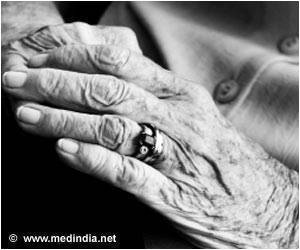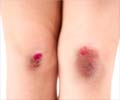
Would healing is a complex process. In the inflammatory phase, damaged and dead cells, bacteria and debris are cleared out by immune cells. In the following proliferative phase, skin cells multiply to grow as new tissue. The transition between these two regulatory point determines the outcome of healing process.
MicroRNAs, or miRNAs, are short pieces of genetic code that are involved in a range of diseases.
"There is very little known about the expression and function of miRNAs in human skin wounds, but we have previously shown that miRNAs play important roles in the regulation of the cells in the outermost layer of the skin, also called keratinocytes", says Dr. Ning Xu Landén, principal investigator at the department of medicine, Solna, Karolinska Institutet.
The researchers collected skin biopsies from the edge of wounds, and looked for changes in miRNA expression during the healing process. They found miR-132, its expression increased during the inflammatory phase and then peaked again in the proliferative phase.
In the inflammatory phase, miR-132 caused less immune cells to move to the wound, whereas a lack of miR-132 meant more immune cells and hence increased inflammation. During the proliferative phase, miR-132 promoted keratinocyte growth, while a lack of miR-132 decreased cell growth and wounds took longer to heal.
Advertisement
The study is published in the Journal of Clinical Investigation.
Advertisement












